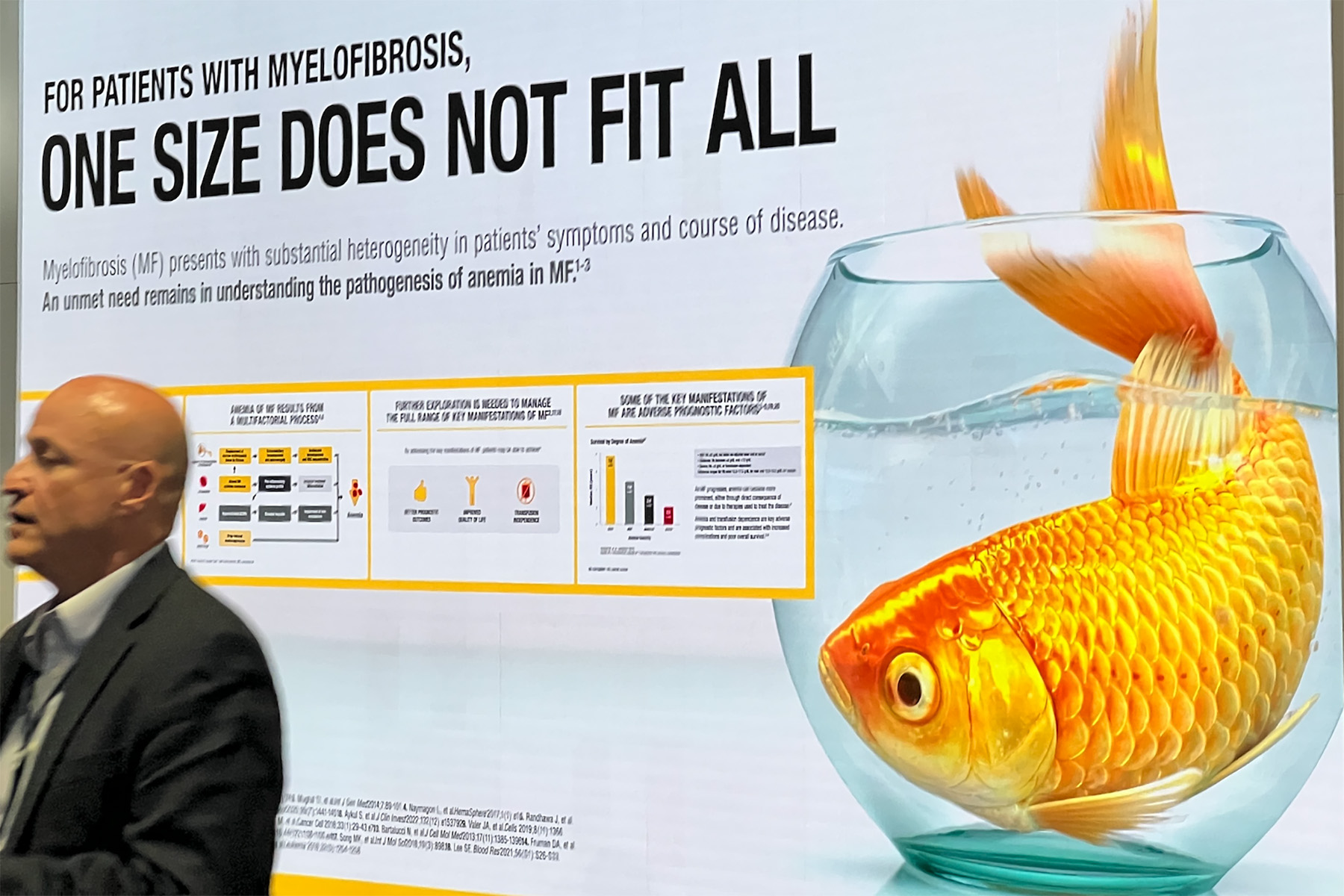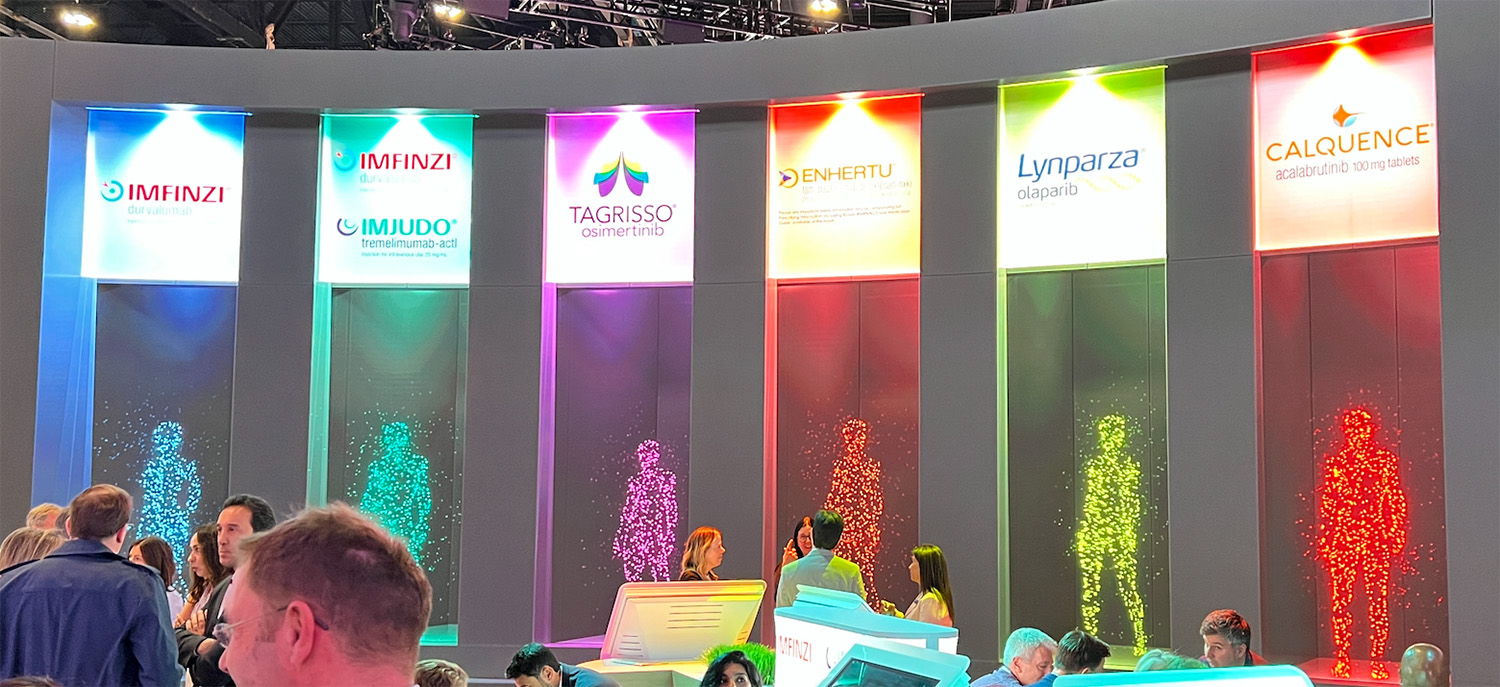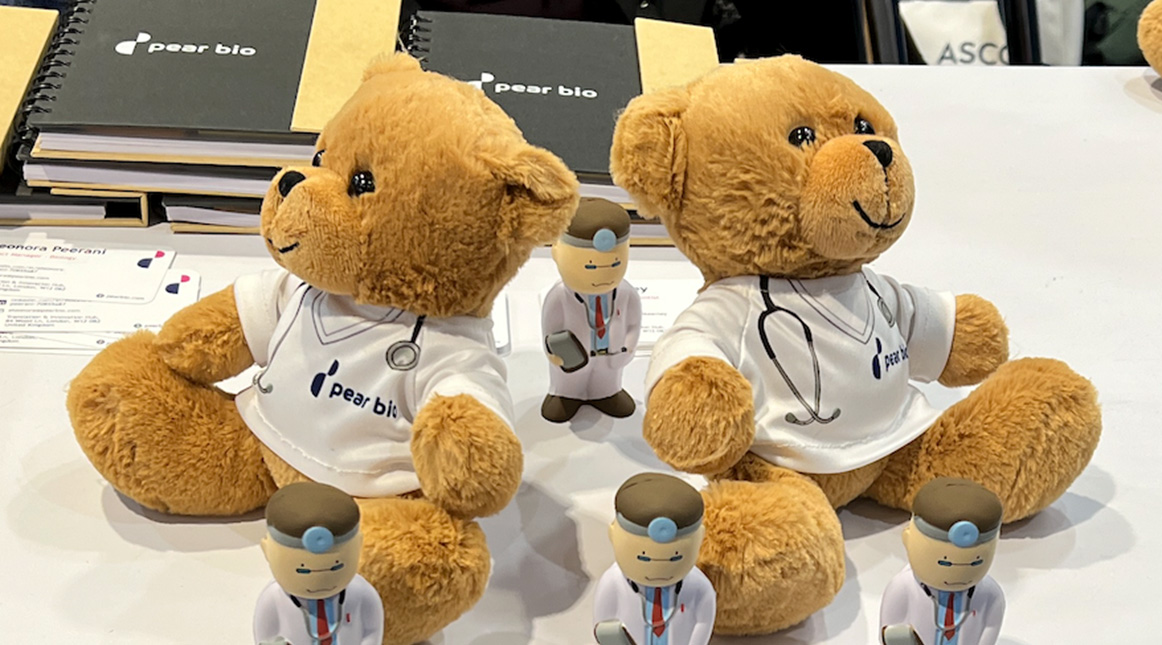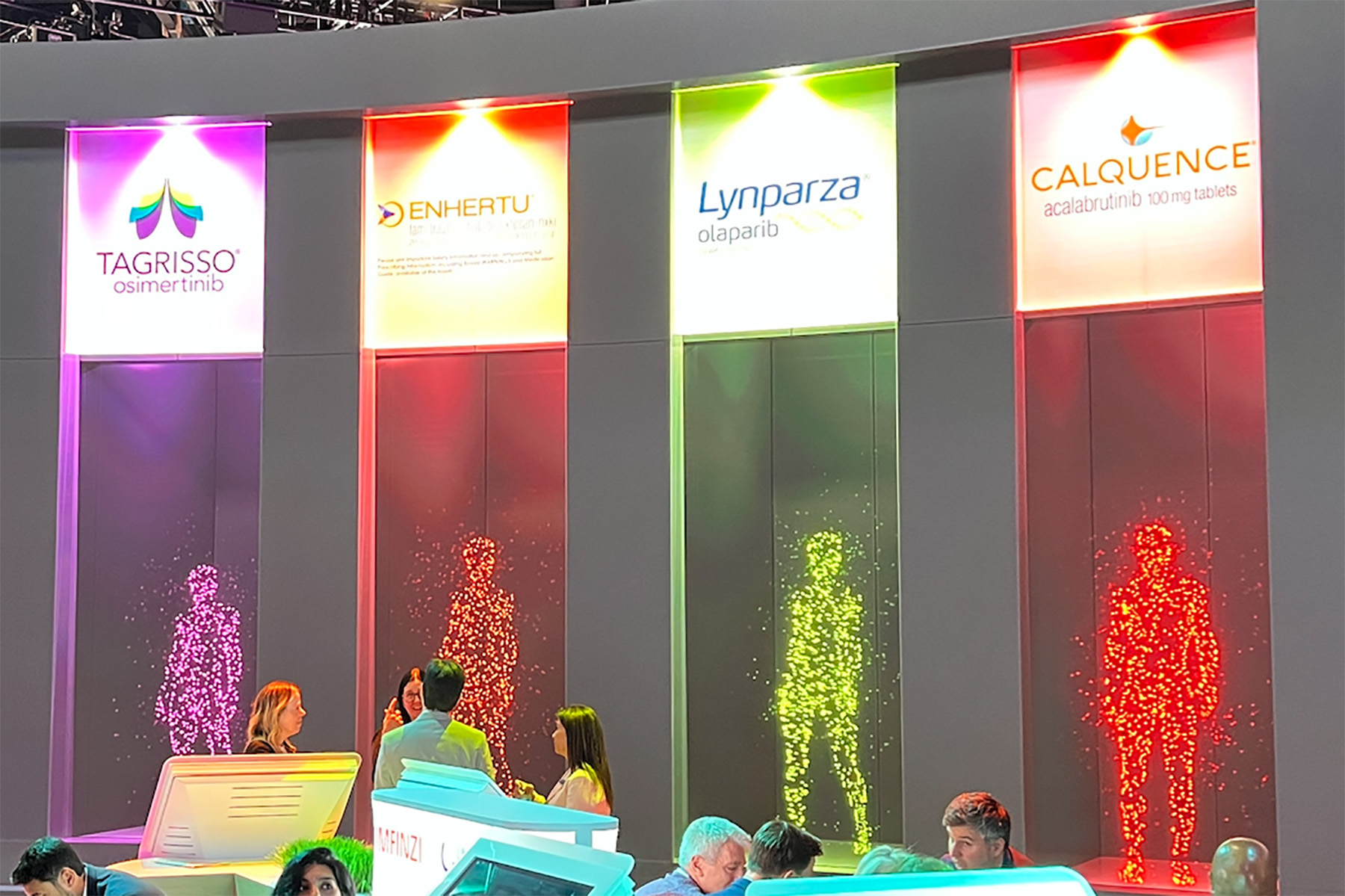Nothing is more humbling for a marketer than walking through the convention floor of ASCO 2023. You are surrounded by some of the world’s most brilliant minds fighting cancer, one of humanity’s greatest scourges. It is incredibly inspiring to see so many advances being made on so many fronts in this war. You see treatments and diagnostics evolving from one size fits all to being ever more personalized and precise. For a simple ad guy like myself, you can start to feel pretty irrelevant in the big scheme of things!
But over the days I toured the convention floor, I frequently walked to a brand’s booth only to realize a few minutes into the experience that I had already been there earlier in the day. The research was compelling, the pipeline was impressive, but the brand was so generic that I didn’t even recognize I was there just a few hours earlier.
As a marketer, it’s really concerning to see these amazing brands struggling to stand out. For too many brands, their booths were a sea of sameness; earnest pictures of dedicated scientists, resolute patients and their caregivers, pipelines full of potential, and the endless, endless, endless strands of bright, colorful DNA.
This is a big problem because these brands need to be remembered long after ASCO. As oncology treatments become more targeted and personalized, oncologists’ opportunity to prescribe new treatments in a particular area stretches from monthly to quarterly to annually. Most of the oncologists at ASCO aren’t actively in the market for a particular treatment for a particular patient. They’re gathering information about treatments they can’t prescribe anytime soon. All those amazing breakthrough needs to be remembered—or at least recognized—many, many months after the initial display. This is a huge and increasing challenge to the adoption of new cancer brands and new indications.
Making Congresses More Memorable
This fact reframes how marketers need to think about their role working with oncology brands at congresses such as ASCO, and most importantly the role of creativity. The job of marketers at congresses is to help brands build memorability, so that not just weeks later, but months later, they recognize and remember the brands as relevant to the patient in front of them.
Three things drive memorability:
1. Distinctive Visuals, Slogans, and Stories
First, it turns out human brains struggle to remember data and abstract concepts, the bread and butter of oncology conferences. We have a far easier time paying attention to and quickly remembering distinctive visuals, slogans that rhyme, and stories that emotionally resonate. This is the bread and butter of creativity, and it starts to lay out how creativity can help oncology brands break through into the minds of practicing oncologists.
The best conference displays feel more like exhibits in an art gallery. The ones that draw your attention use scale, surprise, and simplicity to leave a memorable imprint.
I loved AstraZeneca’s huge 3D video of waves crashing over the exhibit floor, only to reveal different colored starry sentinels for each of their oncology brands. Or GSK’s use of a giant oversized goldfish in a bowl to make their point that “one size does not fit all” when it comes to myelofibrosis. Or MorphoSys’ giant number “5” made up of hundreds of their brand logos, to communicate they had reached the critical threshold of five years of analysis data.


And this isn’t just a game for the big brands. Small brands can also use creativity to punch above their weight. I asked the folks at the Pear Bio booth why they were handing out cuddly bears. Their answer, “Bear rhymes with Pear, so it makes us easier to remember.” I hope after they win their Nobel prize for medicine, someone gives them a Cannes Lion for creative effectiveness! Along with characters and surprising visuals, nothing is as memorable as a simple rhyme. Pear Bio brought all three to ASCO.

I know what you’re thinking—what do starry sentinels, oversized goldfish, giant number fives, and cuddly teddy bears have to do with cancer? Nothing. They are “meaninglessly distinctive,” and consequentially easy to visualize, easy to recognize, and easy to remember. And the more distinctive they are, the more easily they will cue the brand when they are viewed again.
2. Repetition
Second, for oncology brands to be memorable, repetition is critical. So creative brand assets can’t just start and end at the congress. We need to stop thinking of congresses as one-off events. A big part of an effective congress strategy is what happens after the congress. Having created distinctive brand assets you need to repeatedly associate those assets with your brand messaging throughout your overall campaign.
3. Targeting
Finally, for oncology brands to be memorable, they need to be recognized at the decision moment when oncologists have an opportunity to engage with the brand’s area of oncology. The distinctive brand assets you used at the congress need to be incorporated into your more targeted, performance-oriented marketing materials. Marketers need to ensure that the email oncologists see won’t be from a brand they don’t recognize, but a brand they remember. And when you get a piece of communication from a brand you recognize you’re more likely to open it. More likely to consider it. And when that happens, the maddening amount of time it takes for a new breakthrough treatment to thread its way through the medical system is reduced.
Don’t get me wrong, unique, creative, and distinctive brand assets aren’t going to convince any oncologist to switch treatments. Nor should they. Oncology, more than any other category, is a high-involvement choice for both HCPs and their patients—it’s always a calculated decision. We’re not selling Cheetos here. But what creativity can do is draw attention, so that many months later an HCP can at least consider a brand they may not have used before.
Congresses such as ASCO are critical moments where brands have the undivided attention of oncologists. Rather than developing bespoke, or worse generic, creative, our job as marketers is to use that time to overcome the information overload of modern oncology, to build up and reinforce the creative distinctiveness and memorability of our brands, and then reuse those assets repeatedly overtime in brand campaigns, KOL and salesforce presentations, and in targeted digital channels.
Before you can be convincing, you need to be remembered. Creativity at congresses can be the first step in being the cornerstone of an integrated, ongoing, omnichannel brand campaign that drives memorability, engagement, consideration, and thereby adoption. In the overwhelming world of modern oncology, that is no mean achievement.










